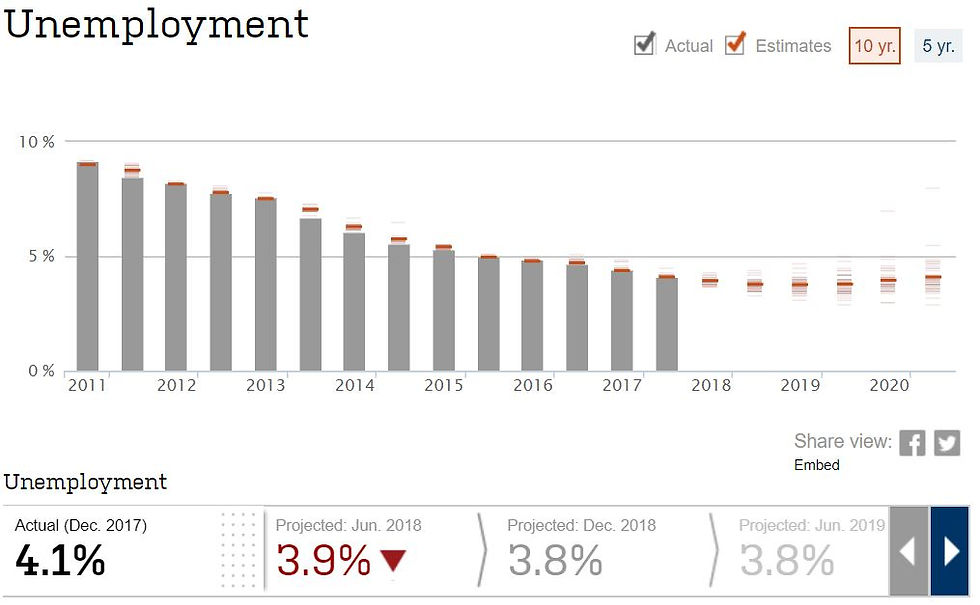Employee Retention 201: Improving Your Position
- Dr. Jeff Doolittle

- Mar 9, 2018
- 7 min read
Updated: Apr 17, 2021

Why it Matters: Employee Retention = Customer Retention
Ask any MBA graduate or newly promoted supervisor, What’s the company's greatest resource? Moreover, you will likely hear it is our people. It is widely accepted that behind every organizational outcome is an employee's actions. Employee retention is a measure of organizational health and can be a leading indicator of future company performance. I have observed key customer engagement metrics having strong statistical relationships (R Squared 0.736 to 0.833 and p<0.001) with employee retention metrics. One caution though is that just like with our temperature where 98.6 is considered healthy, 101 or 95 is not regarded as healthy (for most people) and the same is valid for employee retention. The symptoms companies and teams can experience are similar across industries and companies, but different types of issues exist when employee retention rates are both too low or too high. And unfortunately, unlike our temperature, there is not a single standard across all functions and industries that is considered ideal or “healthy.” In fact, I have read some to suggest a benchmark, but I would suggest only for general guidance because many other factors play into your company's specific “healthy” target.
Culture eats strategy for breakfast. ~ Peter Drucker
One of the most significant negative impacts of low employee retention rates is how it impacts company culture. An organization's culture exists within shared experiences and learnings of its employees. As employee retention decreases the ability of the organization to pass on learnings increases significantly due to lack of experience, fractured relationships and limited employee time due to a lesser skilled workforce. As retention rates drop considerably below healthy levels, the negative impacts are amplified, and companies can find themselves in a retention death spiral. In light of record low unemployment, a shrinking labor force participation rate, and growing economy in the US, there is a perfect storm forming for traditionally high retention companies. In these companies, often culture has and continues to be the single most important competitive advantage for the company, and the impact of this storm can be significant because they have not had to think about these issues before. And unlike with most storm warnings the very last thing these leaders need to do is take shelter.
One of the often silent but deadly negative impacts of high employee retention rates is the existence of organizational blockers. Organizational blockers are employees that hold a position that another qualified individual in the organization could fill as a part of their career path. While having good to high performing employees in the same roles on your team for many years may sound like an excellent thing it comes with some of its own serious drawbacks. Most notably is keeping an "up and coming" high performer in another position from gaining the critical experiences needed or preventing someone who could do the job better from getting a chance. In today's world of constant change and need for innovation, organizations must continually be developing and growing their employees and evolving their businesses to stay relevant.
A Perfect Storm is Making Landfall in the US - Environmental Factors
Many different environmental factors such as, population shifts, societal and generational changes in views on work, and technology are aligning to create the perfect storm for employee retention challenges in the US. One of these environmental factors is today's emerging gig economy:
gig e·con·o·my
noun
1. a labor market characterized by the prevalence of short-term contracts or freelance work as opposed to permanent jobs.
The 2017 Freelancing in America study by the Freelancers Union and Upwork estimated that nearly 57.3 million Americans – or 36 percent of the nation's workforce – are now freelancing, most of whom do so by choice (63 percent). This makes retaining a growing part of the economy a challenging proposition.
Another one of these environmental factors is that baby boomers are exiting organizations at a faster rate with a smaller population of generation x to fill the gaps. If you have not already, you will want to check out the TedTalk by Rainer Strack: The surprising workforce crisis of 2030 — and how to start solving it now.
Another environmental factor is that unemployment has remained at 4.1% for the past 5 months the lowest since late 2000 and is projected to remain under 5% through 2020 according to the Wall Street Journal. The new normal low unemployment is leading to increased opportunities for US employees.

Another environmental factor is that American workers with jobs or looking for work has stood at 62.7% for the past year. In context, ten years ago in December 2007, the job participation rate was 66% (Bureau of Labor Statistics). While retiring baby boomers account for much of the weakness in participation, millions of working-age Americans are choosing to not participate in the workforce.
Lastly, artificial intelligence and machine learning will create significant churn in the marketplace that is bound to increase turnover as employees reskill for the new jobs created. In a recent white paper from PWC titled Workforce of the Future: The competing forces shaping 2030 it’s predicted that employees will have to become more comfortable learning new skills and making career transitions.
"Typical" careers, in which a person advances through the ranks of a particular field, will increasingly "cease to exist" as artificial intelligence and robots replace more human workers over the next few decades. Humans, it says, will have to become more comfortable learning new skills and making career transitions.
Measuring Employee Retention Value and not just Cost
Many measures should be tracked to help you understand the cost of employee retention. In addition to most visible replacement costs, there are others, such as productivity loss, workplace safety issues, and morale issues. Josh Bersin of Deloitte builds on this understanding and explains that employees are appreciating assets that produce more and more value to the organization over time, which helps to explain why losing them can be so costly.

In support of the point Josh was making, I want to highlight one addition less common but important measure you need to add to your list to calculate which is the “Cost of Vacancy.” This measure attempts to account for the lost value of not having an employee you need. At a minimum the simple way to calculate the direct impact is outlined below:
Step 1: Find Annual Revenue Generated per Employee = Annual Company Revenue / Number of Revenue Generating Employees
Step 2: Calculate Daily Revenue per Employee = Annual Revenue Generated by Employee / 365 days (or total number of days per year spend generating revenue)
Step 3: Determine Revenue Lost per Turnover = Daily Revenue per Employee X Average Days Positions are Unfilled
Step 4: Find Total Revenue Lost for All Vacant Jobs = Revenue Lost per Vacancy Job X Number of Vacant Jobs
If you want to look even more closely and fully capture the impacts of lower retention, you should look into In Dr. John Sullivan’s article on the Cost of Vacancy Formulas for Recruiting and Retention Managers . Then working with Finance and senior leadership establishes actual costs and/or an acceptable rough estimate based on experience and intuition. The following is a list of the additional factors suggested by Dr. John Sullivan: Product Development and Productivity, Team Impacts, Individual Employee Impacts, Increased Management Time and Effort, Customer Impacts, Competitive Advantage, Your Company Image and Recruiting, and Out of Pocket Costs.
Product Development and Productivity
Team Impacts
Individual Employee Impacts
Increased Management Time and Effort
Customer Impacts
Competitive Advantage
Your Company Image and Recruiting
Out of Pocket Costs
How to Have Immediate Positive Impact on Employee Retention
So what can you do right now that can have an immediate impact on the likelihood of one of your employees leaving? Stay Interviews a.k.a. talk to your employees with intent to learn how they are doing and what you can do to help. A stay interview can be administered by anyone, but I prefer the leader because they need to develop trust and both the act of listening and then doing something about what is learned will build trust with their team. However, if you have a leader you do not trust, then you need to change the leader and in the meantime have someone that you do trust speak with them. The following are a few of my favorite questions I include in stay interviews:
Positive Aspects of Working Here
Why were you initially attracted to this opportunity? Do the same reasons exist today?
What recognition have you received lately that makes you feel good? What part of your job do you find rewarding?
Company Culture
What do you enjoy most about working with your leader and the broader company leadership?
Based on your experiences and interactions how would you describe our company culture? Strengths and Opportunities?
Positive Improvements
If you were granted three wishes and could change your job and/or this company what would you wish to change?
Looking five years into the future where everything you ever wanted has come true describe what do you see?
For some additional impact and accountability print off pictures of each employee that reports to one of your leaders. Ask the leader without looking at their notes to add the name of the employee, and one fun fact they learned from their stay interviews with their employees.
Predicting Voluntary Turnover
You may often feel like you are looking in a rearview mirror with most of these lagging metrics that tell you what you likely already know and that is you have a problem and opportunity with employee retention. Today though through the use of organizational diagnostics you do not have to settle for being reactive and can better understand what is creating reduced employee retention. I have used one of these diagnostics to understand better the employee stressors that were hindering employee engagement. Then using this understanding focus retention efforts and help reduce employee flight risk and in return improve employee retention.
I want to hear from you with your questions, comments, and employee retention experiences. Also, if you need help getting started with employee retention or would like to learn more about how you can use organizational diagnostics, I would like to help.







Comments